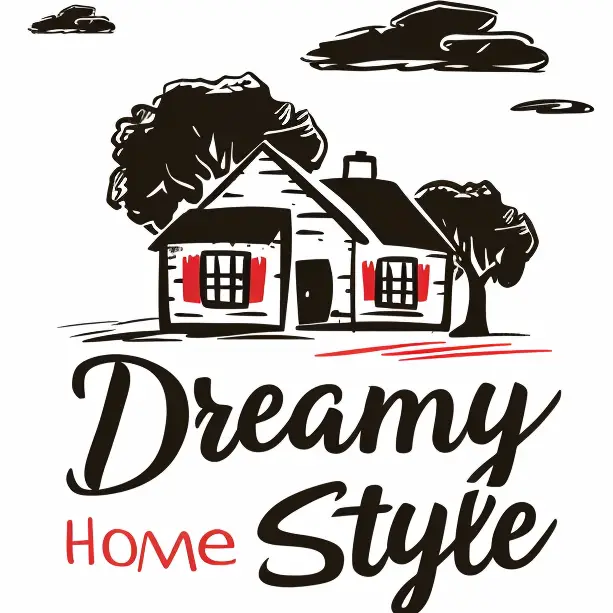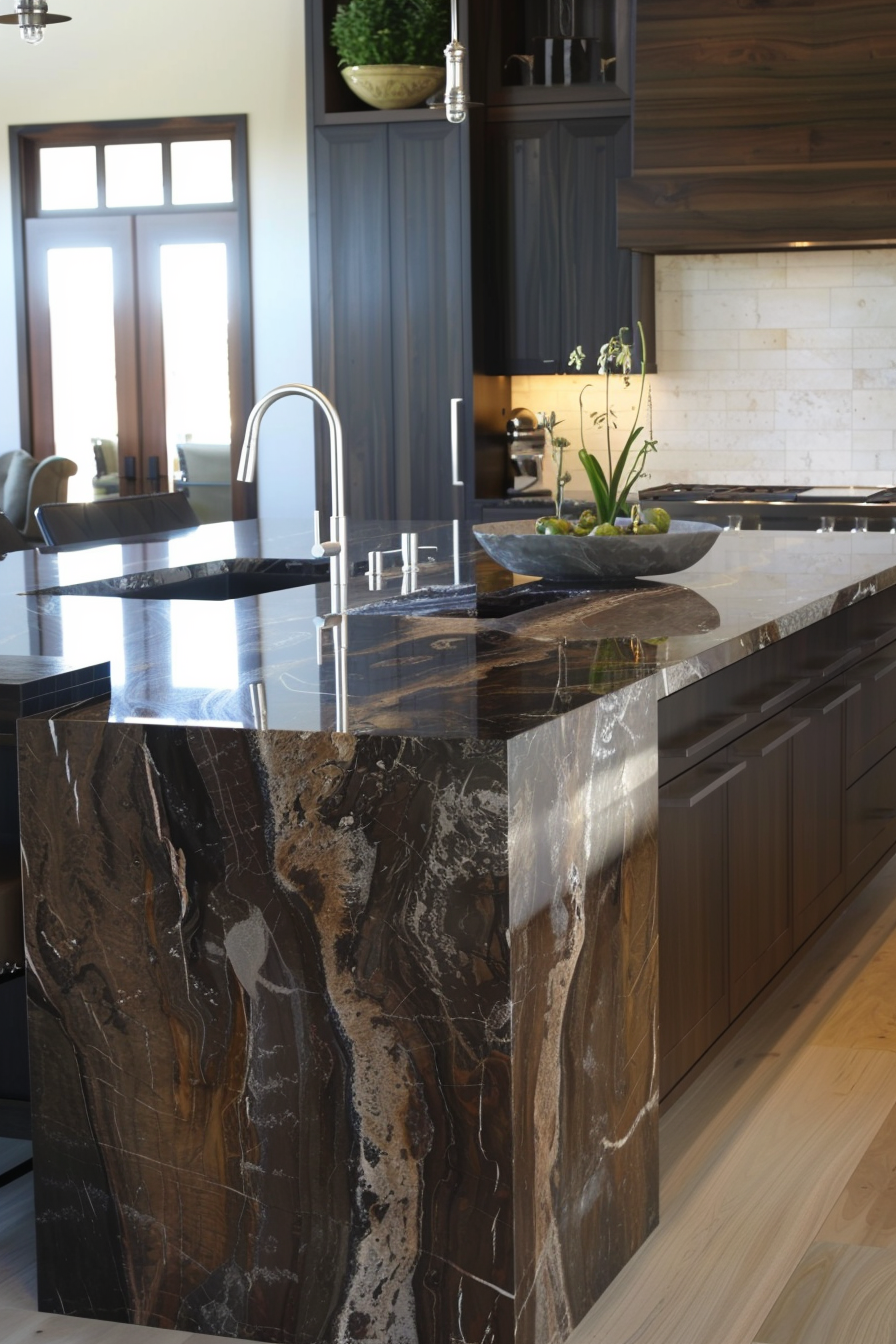Natural wood kitchen cabinets can add a warmth and beauty to a kitchen that is hard to achieve with other materials.
Wood has a timeless appeal that has made it a popular choice for kitchen cabinets for centuries.
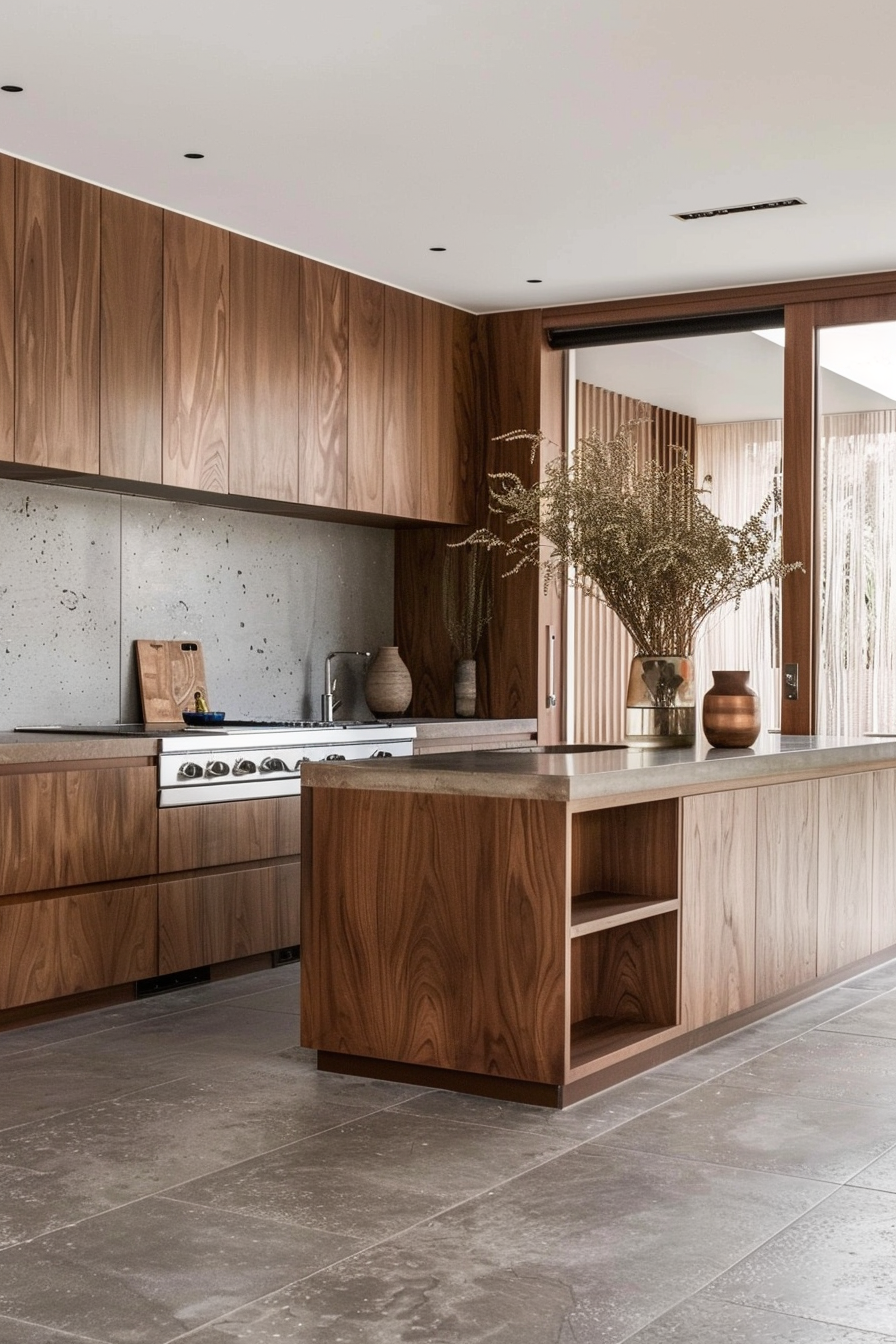
The natural variations in wood grain and color provide a richness and depth that can elevate the look of any kitchen.
Homeowners are moving away from the uniform sameness of stock cabinets in favor of the uniqueness and character of real wood.
There are many stunning options available that highlight the natural beauty of wood while providing a functional storage solution.
When choosing wood cabinets, there are a few key considerations.
First, think about what tone of wood suits your style.
Darker woods like cherry or walnut have a sophisticated, upscale look.
Lighter woods such as maple provide a casual, airy feel.
The type of wood also makes a difference in the end result.
Hardwoods like oak and maple are extremely durable, while softer woods like pine will dent and scratch more easily.
Exotic woods can provide dramatic visual impact but often come with a higher price tag.
Do some research to find woods that fit both your aesthetic preferences and budget.
No matter what types of wood and finishes you choose, natural wood cabinets add texture and warmth that perfectly complements the heart of the home.
✨Click to Get My 101 FREE Designer Room Ideas
White Kitchen with Wood Island
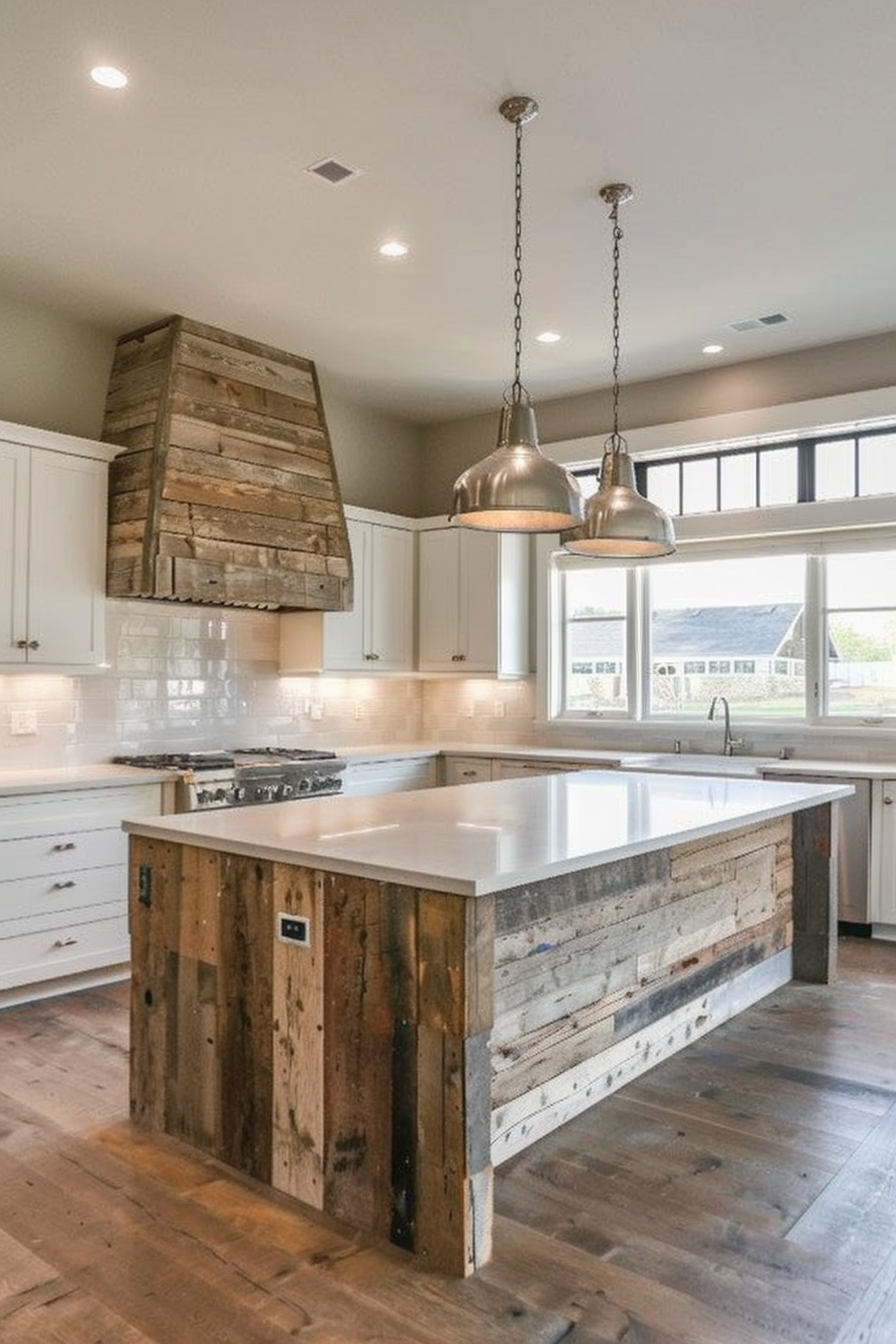
The clean, airy look of a white kitchen gets a touch of warmth with the addition of a natural wood island.
The light color palette emphasizes the varying tones and grains of the wood for a stunning contrast.
Opt for white cabinets on the perimeter to reflect light and make the space feel open and expansive.
Choose a wood with dramatic visual impact for the island like walnut or oak.
Consider installing open shelves or glass cabinet doors on some of the uppers to allow displays of pretty dishware that pick up the colors in the wood.
Add eye-catching hardware in brushed brass, champagne bronze or matte black for another opportunity to contrast with the wood island.
Include furniture-style seating around the island for casual dining.
The mix of materials and neutral background really allows the wood island to take center stage.
Rustic Farmhouse Style
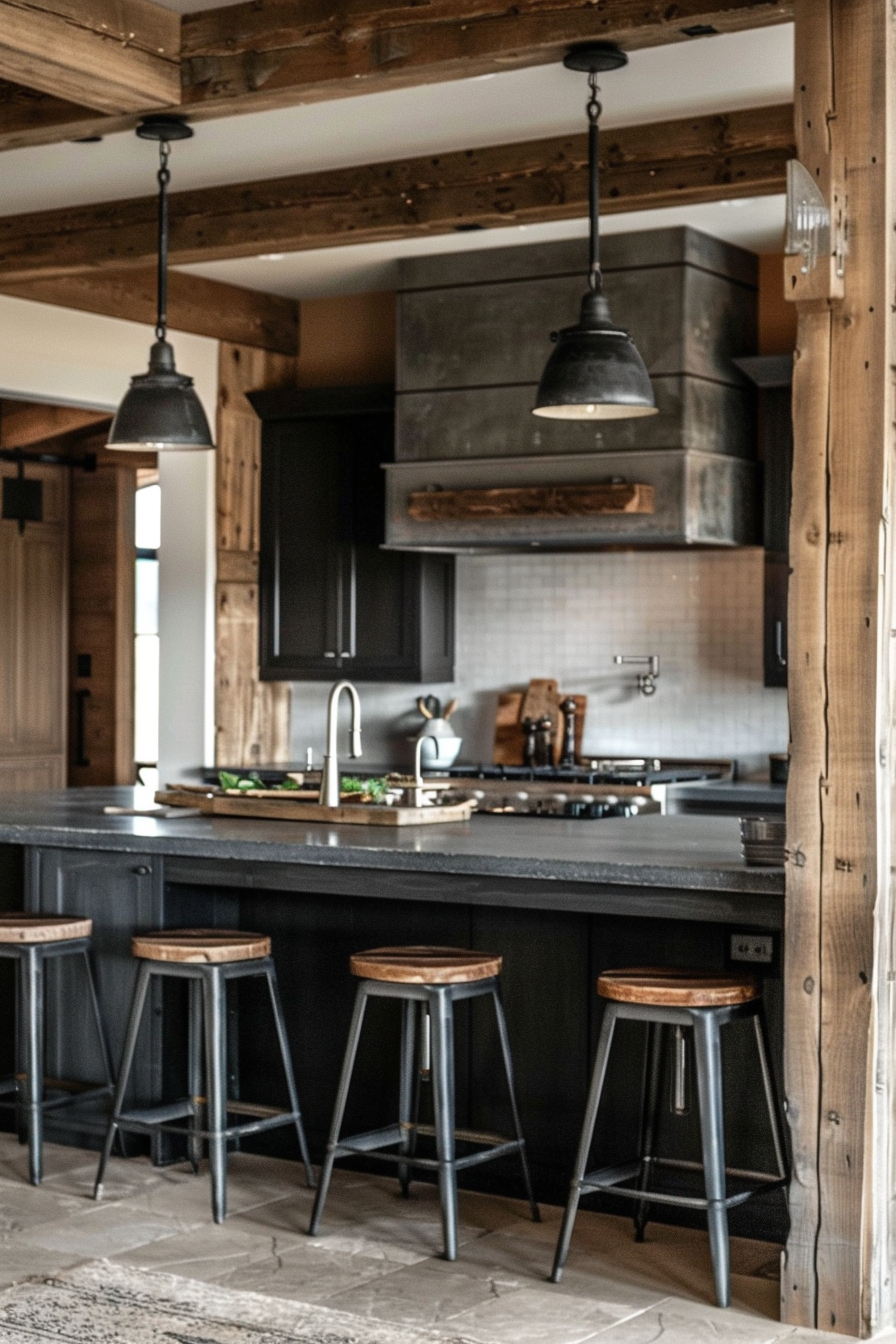
Embrace the character of natural wood cabinets with a rustic farmhouse style kitchen.
Knots, distressing and varied stains play up the authenticity of real wood.
Opt for classic shaker style cabinet doors with visible wood grain.
Consider mixing woods within the same color family such as maple and oak for subtle tonal contrasts.
Add vintage inspired hardware in antique brass or black for another layer of texture.
Open shelving and glass cabinet doors are perfect for displaying collections or herb gardens.
Use wood for added architectural details like thick corbels, arched valances over sinks or reclaimed wood vent hood covers.
Mix in galvanized metal, marble or butcher block for additional surfaces that complement the wood cabinetry.
This look creates a welcoming, laid-back kitchen perfect for family gatherings.
The rustic woods infuse warmth and craftsmanship for an overall natural, organic feel.
Minimalist Kitchen with Wood Cabinets

Wood doesn’t have to convey a rustic or traditional look.
It can also create a very sleek, contemporary kitchen when paired with a minimalist style.
The rich wood grain provides depth and interest while painted walls, ceilings and backsplashes keep the look crisp.
Opt for a single wood variety like teak or maple in a light natural stain.
Simple flat panel doors with exposed handles or discreet pulls embody minimalism.
Consider incorporating woodfronts into your appliance garage and pantry doors for a cohesive look.
Glass cabinets and open shelves reinforce the minimalist aesthetic.
Clean lines, ample negative space and an absence of ornate detailing place the focus on the beauty of the wood itself.
The natural variations and swirls in the grain become like art against the blank canvas of walls.
A minimalist kitchen proves wood can convey an elegant, refined look when treated with restraint.
Modern Walnut Kitchen
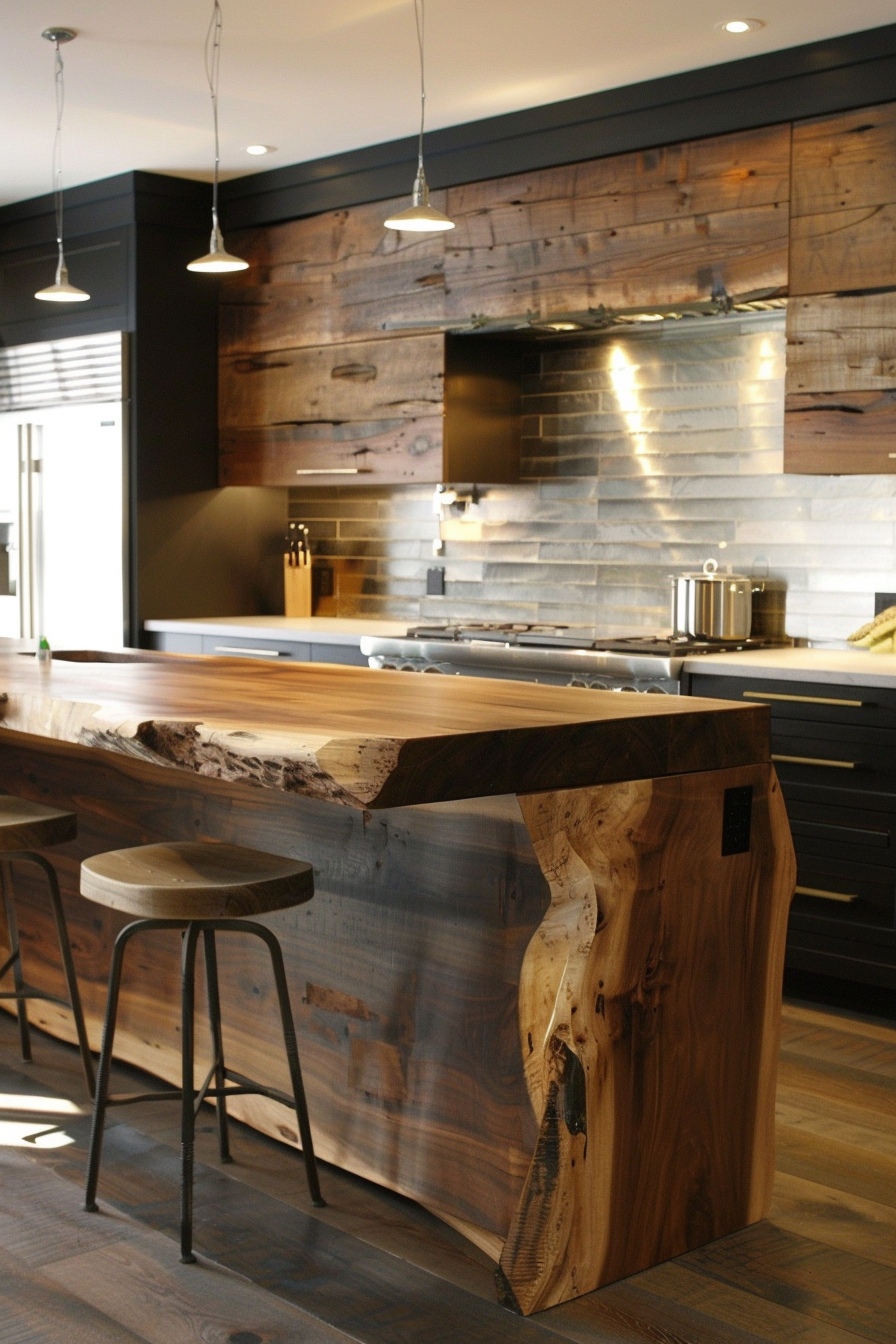
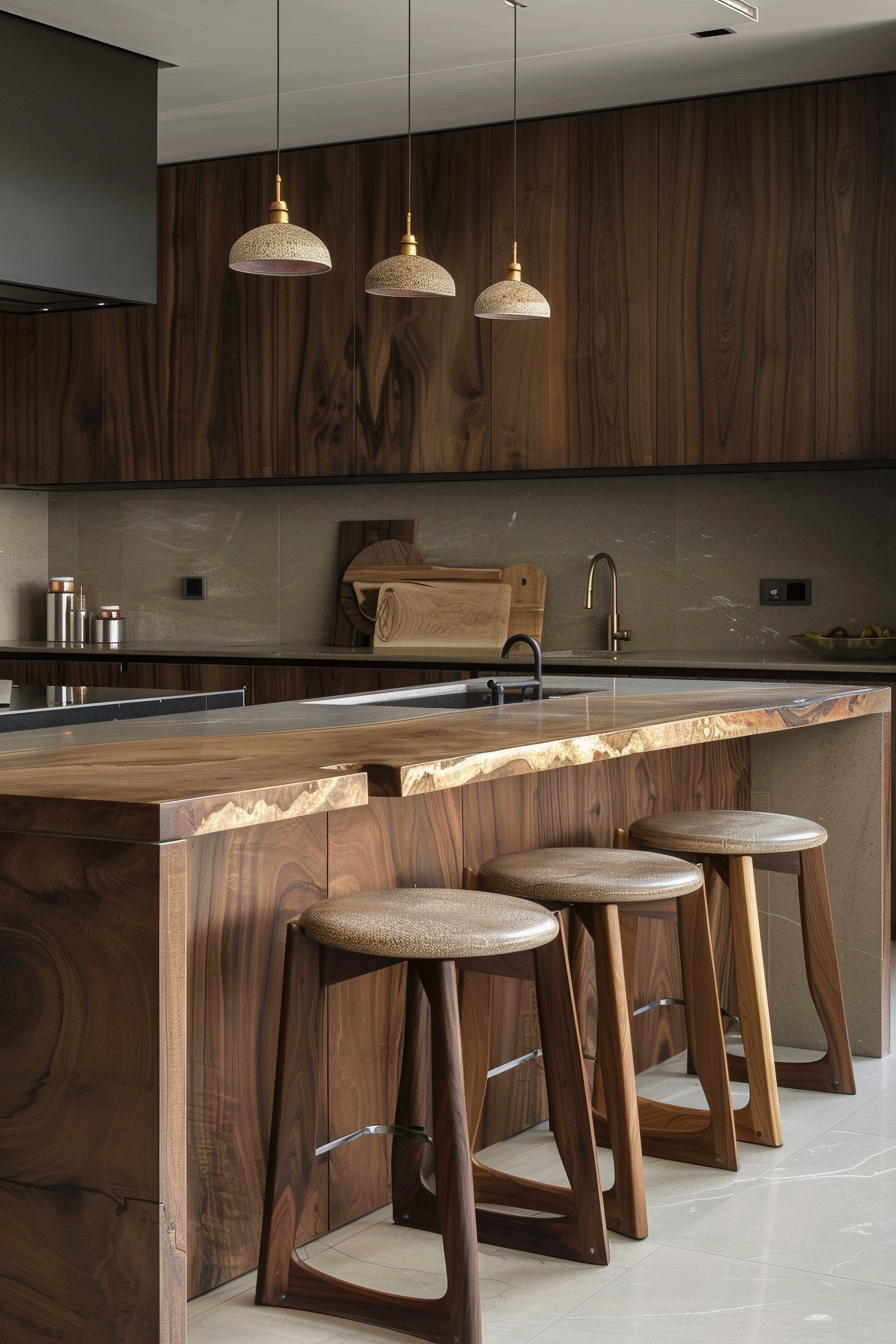
For a striking modern statement, opt for walnut cabinetry with its pronounced grain and rich dark color.
The unique properties of walnut wood make it an exceptional choice for contemporary designs.
Walnut naturally exhibits diverse grain patterns ranging from subtle waves to dramatic swooping burls.
Its dark chocolate brown color provides bold contrast against white walls and stainless steel appliances.
Take a cue from mid-century modern style by selecting simple slab cabinet doors without exterior hardware.
This allows the gorgeous wood to take center stage without distraction.
Incorporate architectural details like wood fronted drawers and angled legs supporting kitchen islands or free-standing cabinetry.
Glass cabinets and open shelves break up the dark wood while displaying accent pieces in crisp white for maximum contrast.
Walnut’s dynamic grain and saturated color lend well to modern, sculptural kitchens.
Its organic variation aligns with mid-century emphasis on uniting nature and design.
Let walnut make a striking style statement by using it creatively throughout your kitchen.
✨Click to Get My 101 FREE Designer Room Ideas
Industrial Wood Kitchen
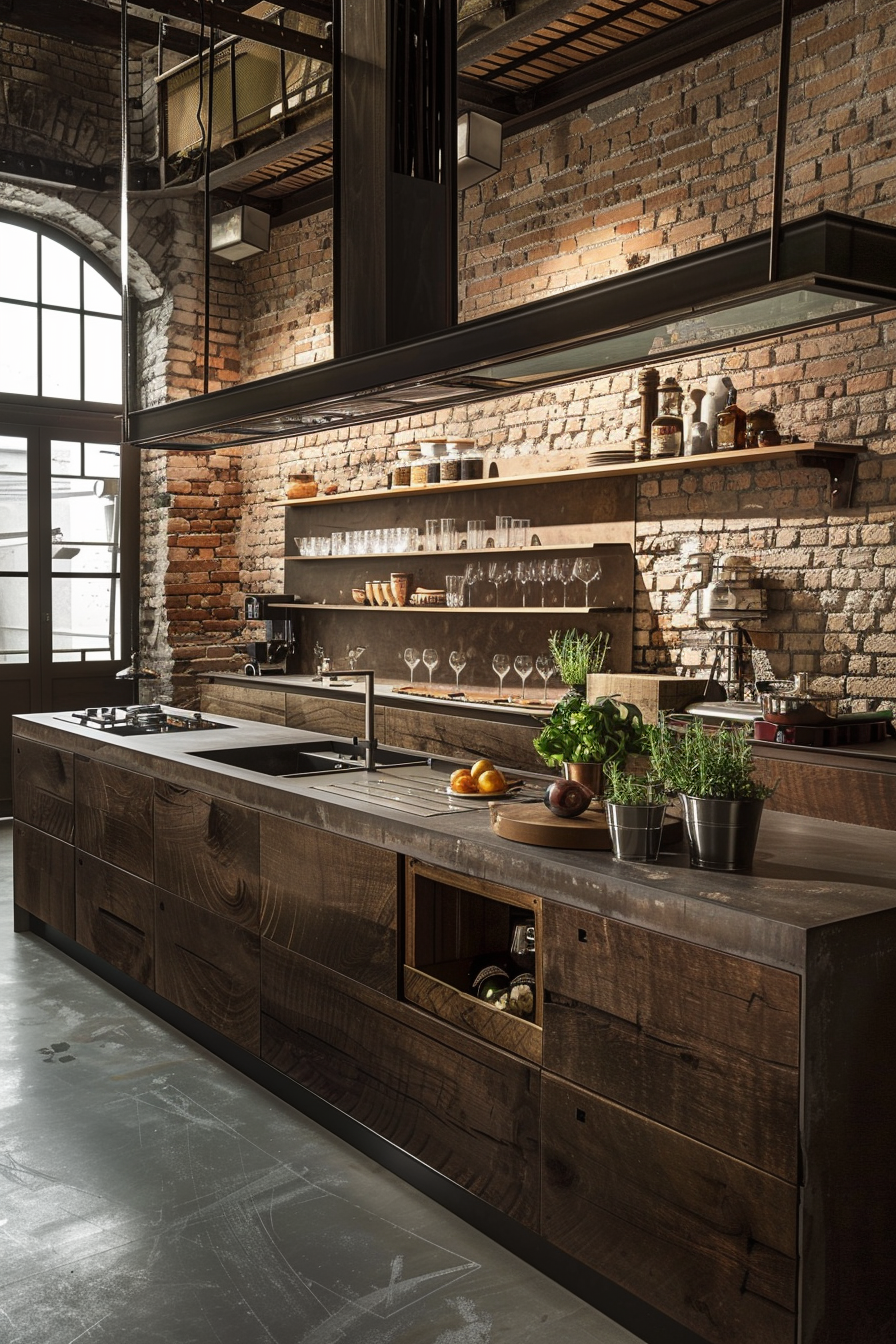
Reclaimed or raw wood cabinets are the perfect match for industrial style kitchens.
Unfinished woods like pine and fir emphasize the natural aging, cracks and imperfections associated with salvaged materials.
Consider using reclaimed barn siding for a weathered patina that highlights the original texture of the wood.
Similarly, you can sand cabinets down to expose the rough wood grain underneath for an authentic industrial edge.
Use simple hardware like exposed metal brackets and bolts to continue the factory aesthetic.
Contrast the wood with concrete, metal or brick accents and accessories.
Include an eclectic mix of wood elements like an oversized barn door on rustic tracks, plank open shelving or an antique wood cart for extra prep space and storage.
The key is to spotlight the imperfections that make each piece of wood truly unique.
The rich character of unfinished wood cabinets couples perfectly with an industrial space.
Light & Airy Kitchen with White Oak Cabinets
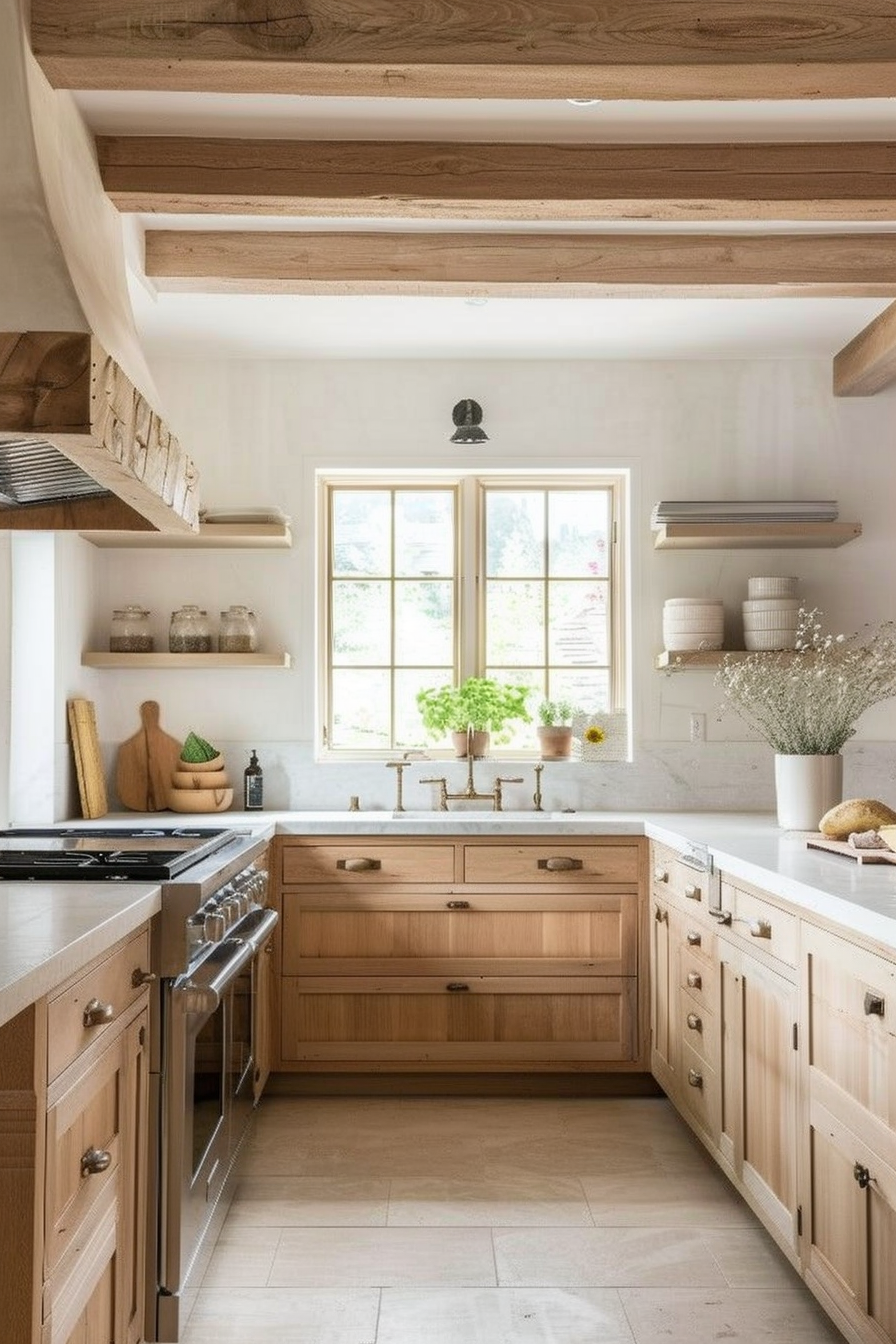
White oak has a beautiful light tan color with occasional dark brown streaks that provides natural contrast.
The subdued tone allows the cabinets to disappear into a light, airy kitchen design while adding warmth and texture.
Monochromatic colors like varying shades of white and grey highlight the subtle details in the wood grain without competing.
Consider exposed white oak shelving and beams on the ceiling to carry the wood tones overhead.
Integrate glass cabinet doors, glass tile backsplash and reflective metal hardware for radiant light to bounce around the space.
The light wood coupled with reflective surfaces emanates a bright, sunlit feeling.
Aprovecho open wall space to add rows of windows or glass exterior doors that bathe the kitchen with natural light.
The white oak’s mild presence blends right into this cheerful, welcoming style without overpowering.
It brings a touch of nature’s calm to an otherwise ethereal kitchen.
Contemporary Maple Kitchen
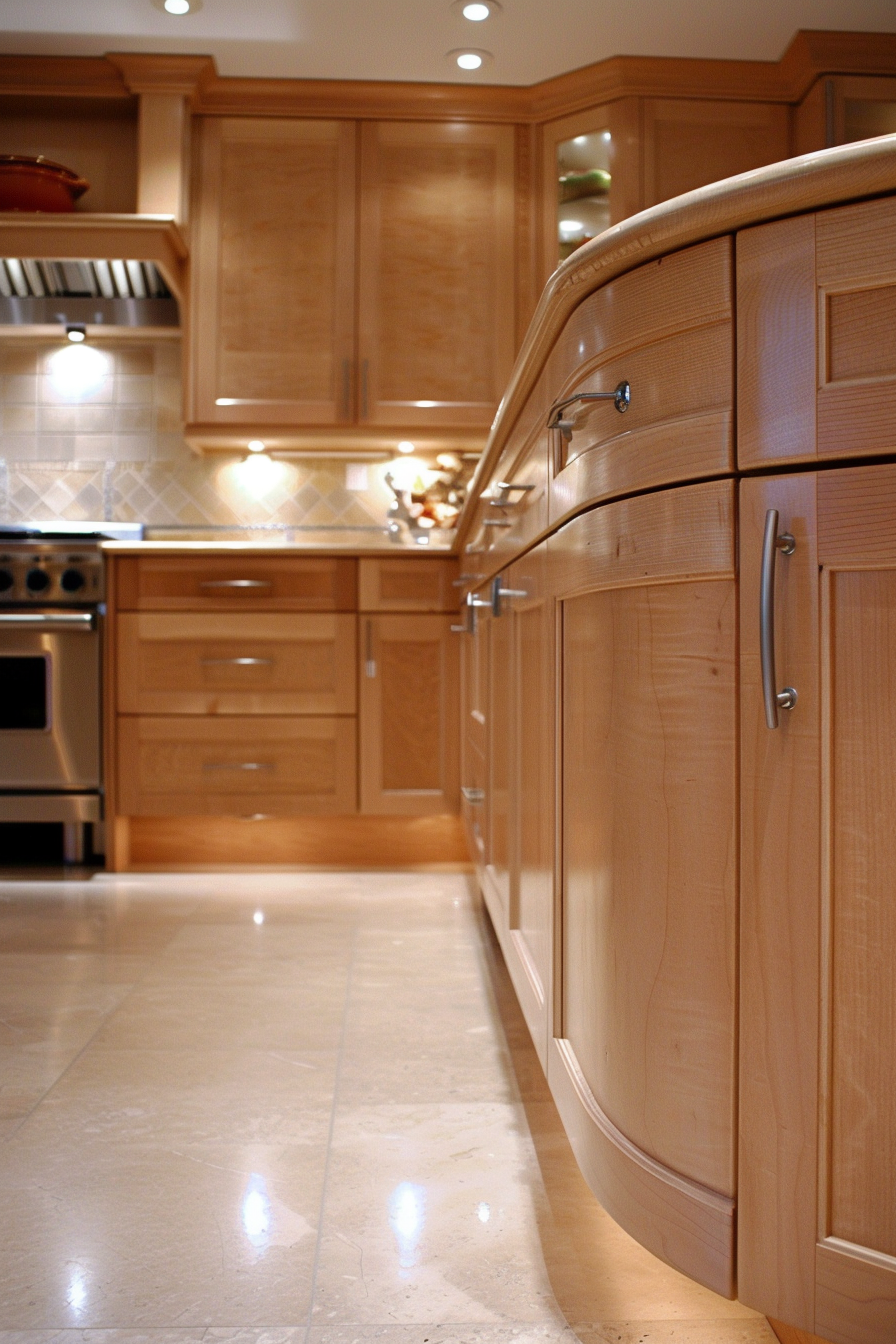
Maple may be the most versatile species of wood for kitchen cabinets.
Its fine, straight grain accepts stains readily, so it can be customized to fit any style.
Maple has a light base color that ranges from nearly white to pale tan.
When painted or stained, it provides an understated elegance perfect for a contemporary kitchen.
For a sleek modern look, opt for a creamy white or light driftwood gray stain.
Pair with polished concrete floors and stainless steel appliances for cool tones and smooth surfaces.
Another option is an espresso stain for a dramatic moody vibe when paired with leathered granite and oil rubbed bronze hardware.
Whatever color you select, maple allows the beauty of the wood to show through.
Its tight grain provides crisp definition when painted or stained.
Due to maple’s hardness, cabinets maintain their crisp lines and prevent dents over a lifetime of use.
Taking advantage of maple’s customization makes it an ideal wood type for contemporary kitchen styles.
Traditional Cherry Cabinets
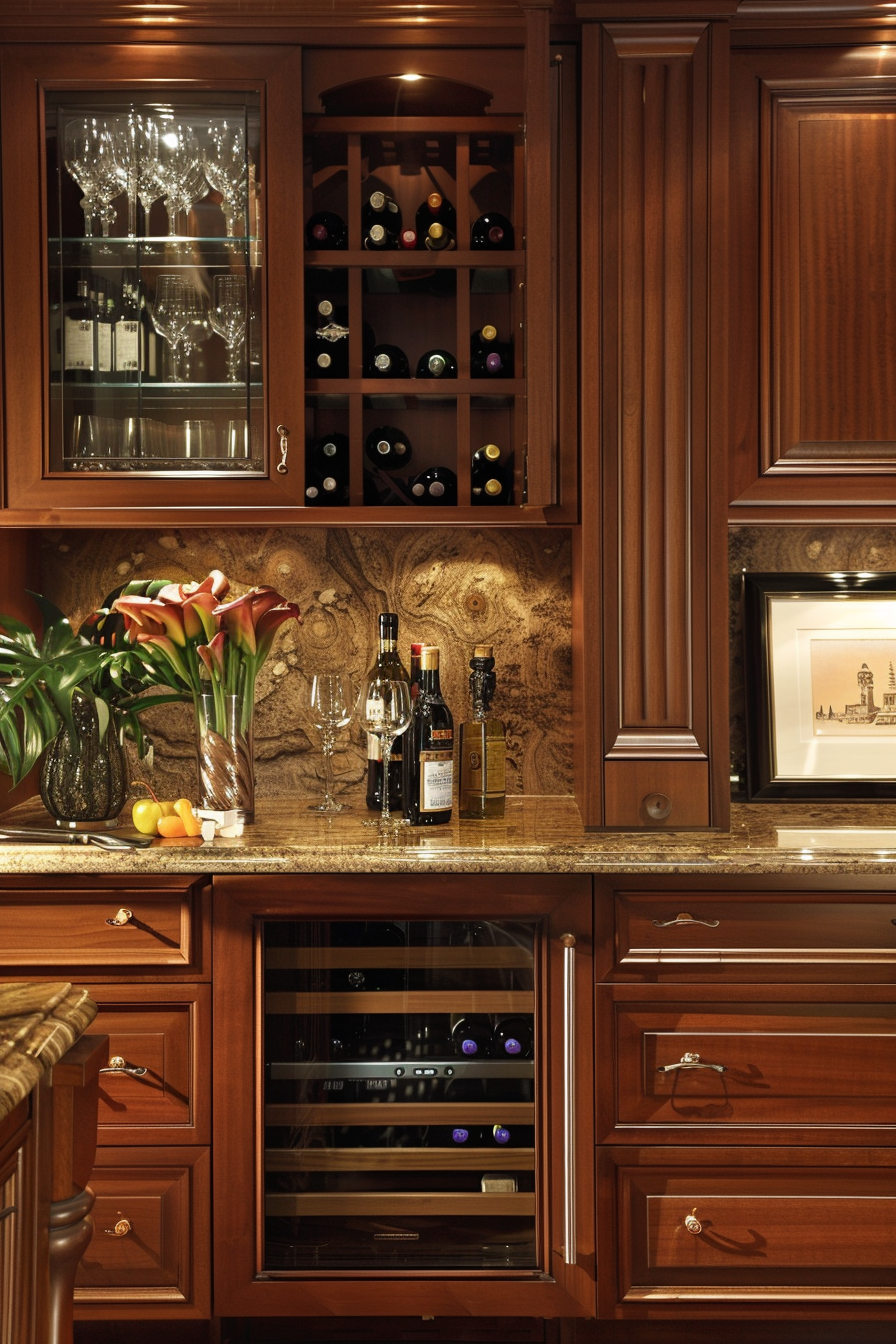
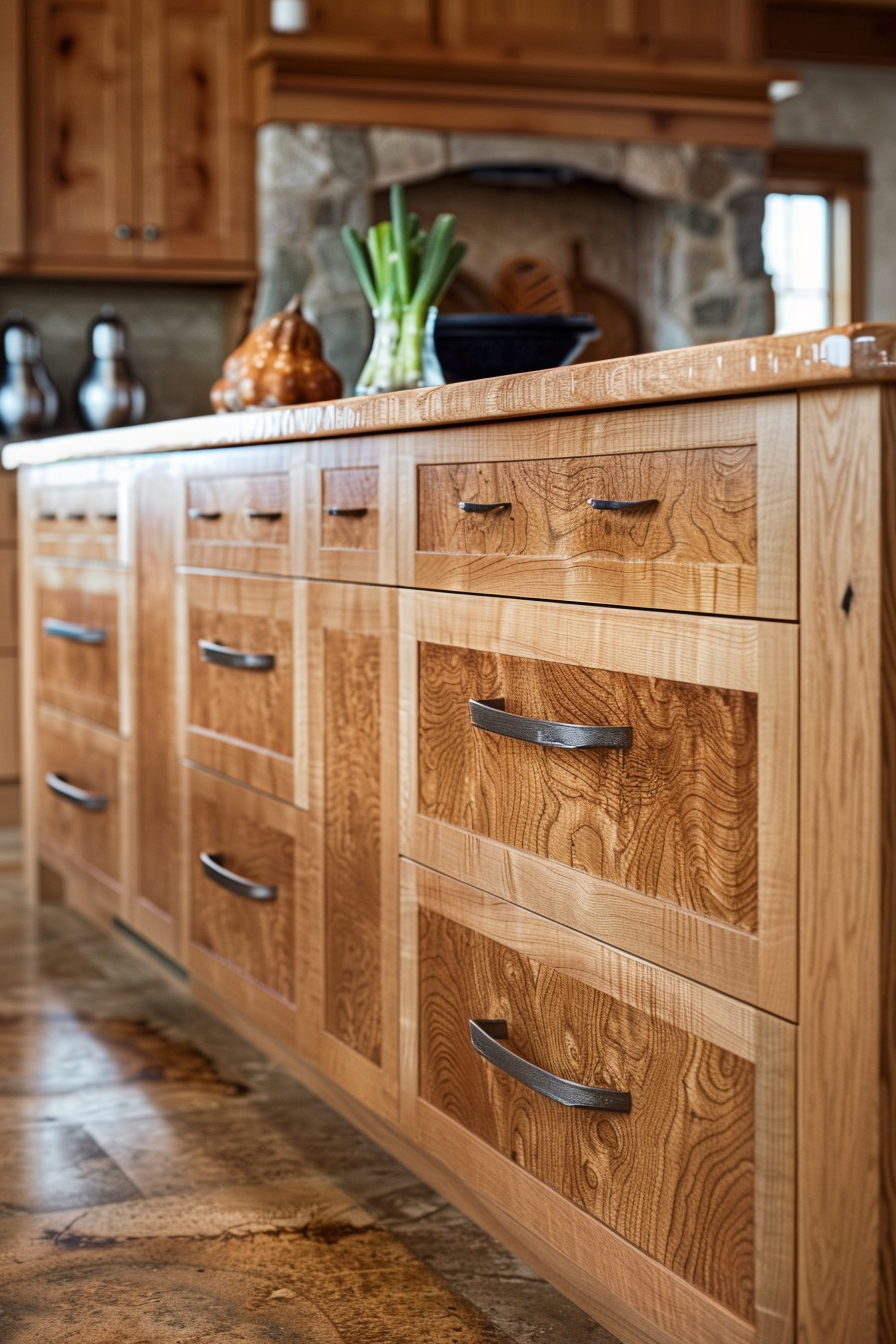
Cherry wood has been a beloved classic for kitchen cabinets for generations, and for good reason.
Its rich red-brown coloration and mild grain pattern create an elegant, luxurious look perfect for traditional home styles.
Painted walls in beige, blue or sage green complement the warmth of the wood cabinets.
Play up the traditional charm with raised panel doors, carved detailing and crown molding.
Glass door cabinets showcase heirloom dish collections while maintaining the classic cherry cabinetry.
For hardware, select antique brass or rubbed bronze pulls and knobs that bring out cherry’s reddish undertones.
Include architectural cherry wood details like corbels supporting upper cabinets or display shelving flanking the range.
The refined, timeless beauty of cherry wood kitchen cabinets infuse traditional homes with comfort and craftsmanship.
Using them throughout the kitchen as accents reinforces the overall classic design.
✨Click to Get My 101 FREE Designer Room Ideas
Shaker Style Oak Cabinets
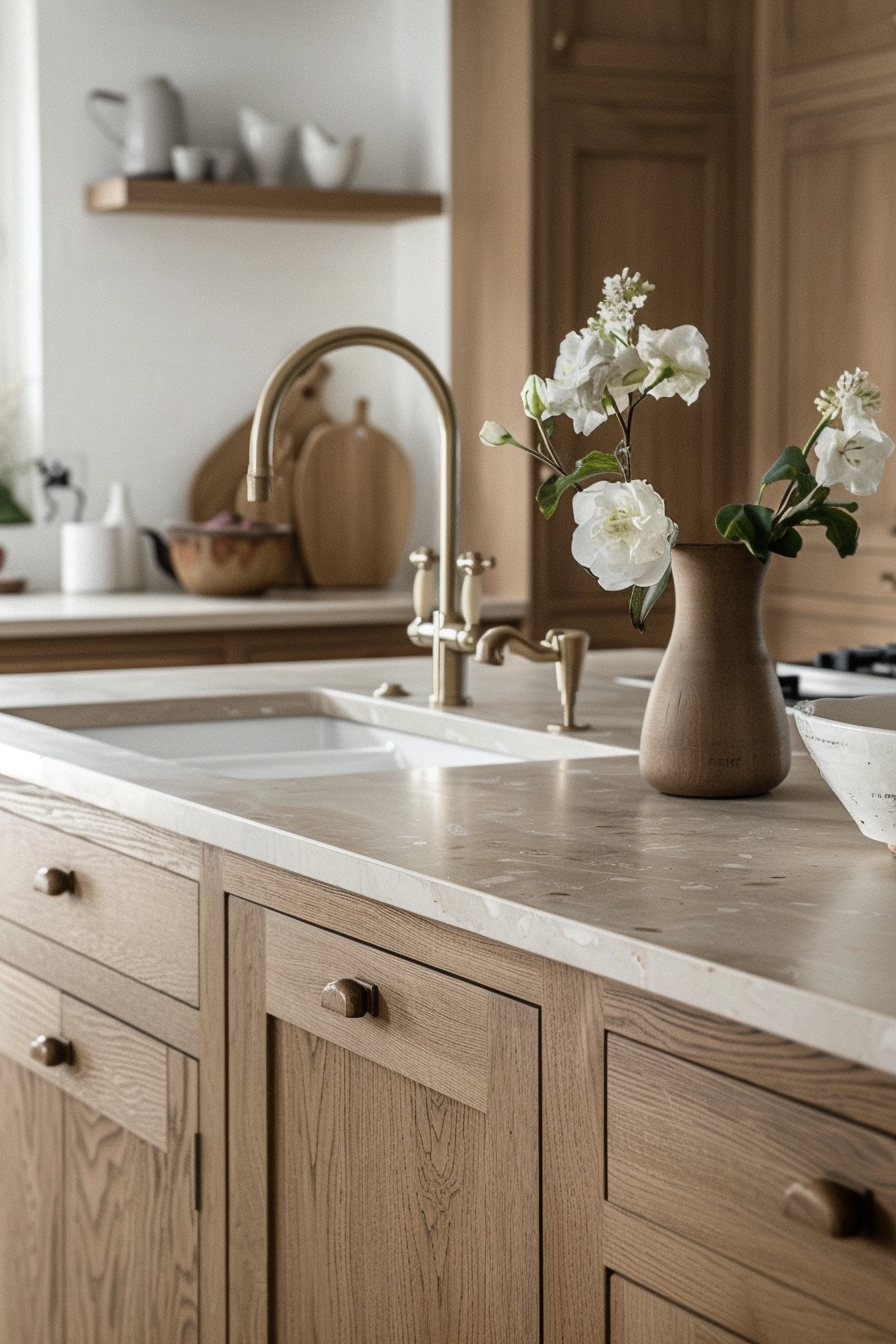
Oak is a sturdy wood with a straight, pronounced grain that suits Shaker style cabinetry beautifully.
The Shaker emphasis on function and simplicity in design allows the natural beauty of the wood to take center stage.
Light stains emphasize oak’s natural tan color with occasional darker knots and streaks that provide charming character.
Consider a vertical grain oak that maintains the wood’s linear pattern for a more uniform, modern look.
Otherwise, keep the classic cathedral grain oak to showcase the flowing organic movement in the wood.
Install simple rail and stile doors for clean lines and maximum exposure of the oak itself.
Rather than elaborate hardware, allow the wood’s knots, streaks and grain detailing to decorate the cabinets.
For a brighter, airier look combine white oak cabinets with painted wood ceilings and walls in pale blue, green or yellow.
Richer red oak cabinets make a striking statement contrasted with white.
Simple and functional oak wood cabinets form the perfect blank slate for Shaker kitchens.
Dark Wood Kitchen Island
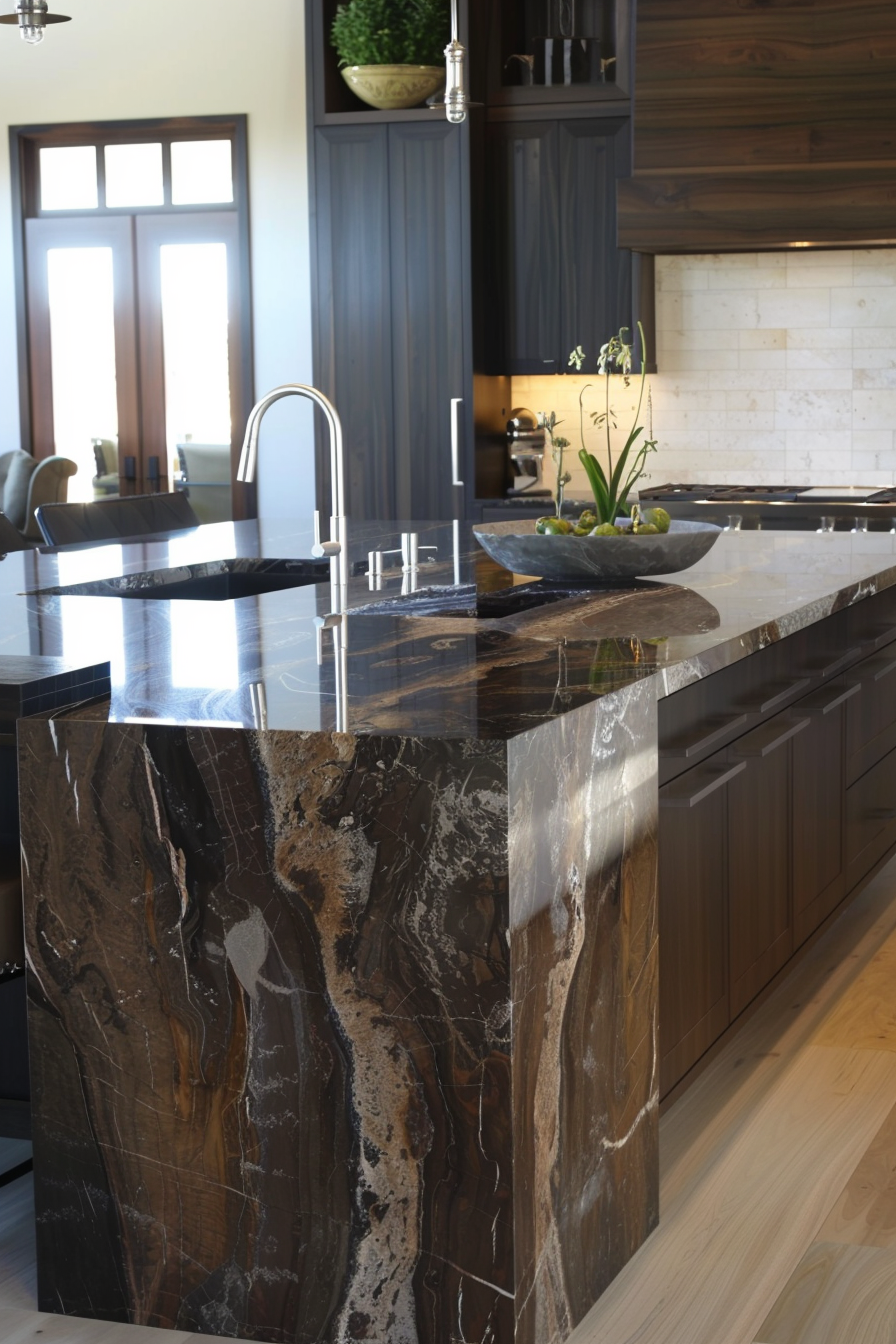
One way to enjoy the drama of dark wood while avoiding total darkness is to use it selectively for accent pieces.
A great option is to make the kitchen island out of a bold dark wood while surrounding cabinets remain light.
This instantly creates a dynamic focal point in the cooking and entertaining hub of the kitchen.
Good dark wood choices for islands include walnut, mahogany or wenge.
Their darker tones and pronounced grains pop against a white or neutral backdrop.
Include furniture-style features like legs, drawers, and open shelving in the island design to showcase the gorgeous wood details.
Pair with light marble or quartzite countertops and backsplash to prevent too overwhelming of a look.
The dark wood island injects a sense of intimacy, craftsmanship and warmth within the brighter kitchen scheme.
It’s an impactful way to enjoy rich wood beauty without total commitment.
Two-Tone Kitchen Cabinets
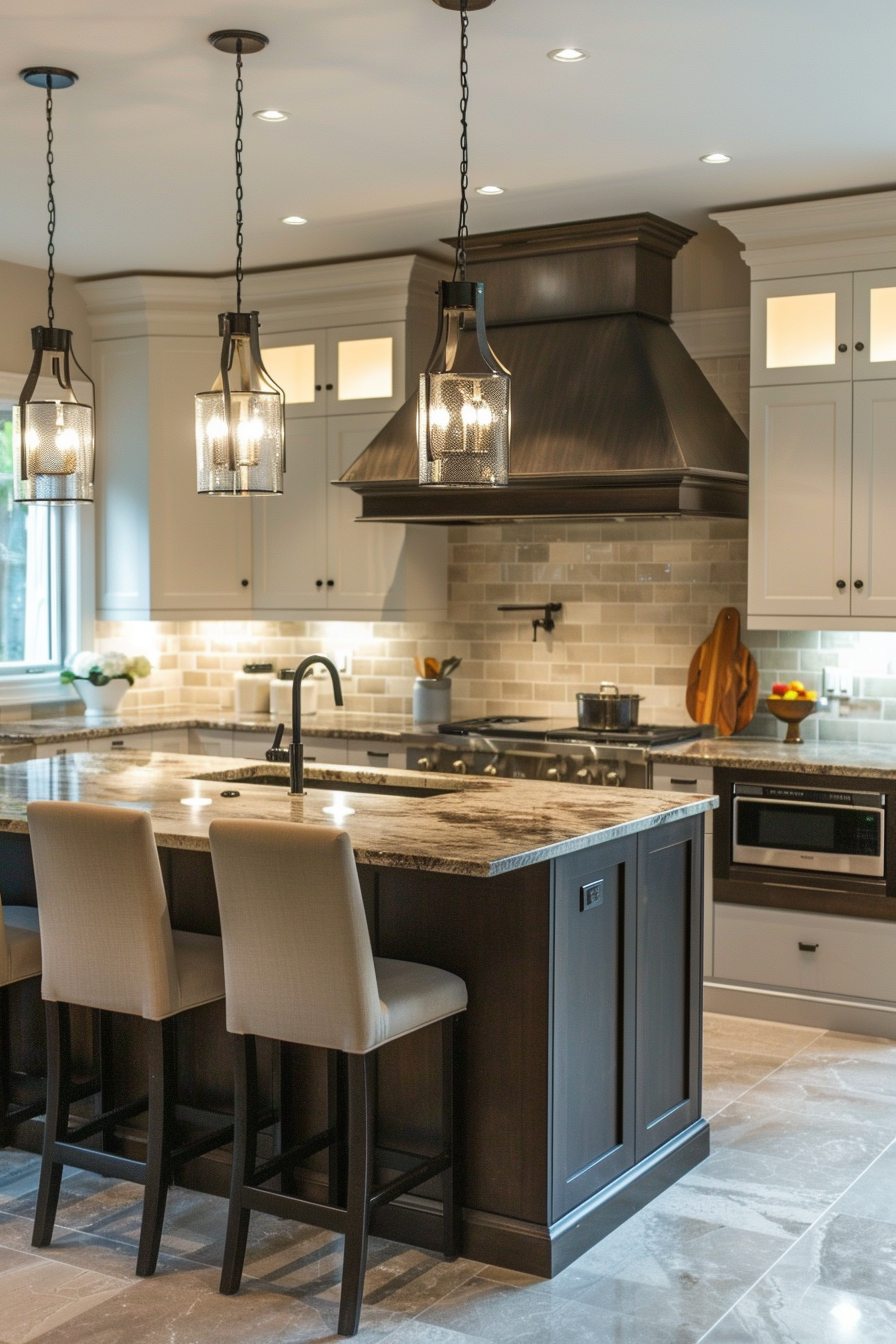
Why choose just one wood when you can combine two beautiful varieties to double the interest?
Two-tone kitchen cabinets allow you to enjoy both the visual contrasts and unified character of natural wood.
Some stunning combinations include walnut bases with white oak uppers, maple perimeter cabinets with a cherry wood island, or light oak frames with ebony insets.
When selecting two woods, consider pairings with enough similarity to complement each other while still creating distinct contrast.
Work in the same color family such as light and dark browns or tans for cohesion.
Matching the grain orientation and finish technique also helps the woods feel harmonized.
Don’t be afraid to highlight the boundary between the two types with trim molding for defined separation.
Two-tone cabinetry brings more dimension, depth and personality to a kitchen through the interplay of woods.
It allows you to really take advantage of the stunning range natural wood has to offer.
Natural Wood and Brick Kitchen

Exposed brick is a charming design choice that couples beautifully with natural wood cabinetry.
The textural, earthy qualities of the two materials complement each other perfectly.
Weathered, salvaged wood cabinets feel right at home against worn brick walls with historic character.
Soften the hard surface of the brick by terminating the cabinets with a wood counter surface like butcher block.
Take advantage of the brick’s durability by leaving small sections exposed to display cookware.
Wire storage racks attached to the brick create handy extra space for kitchen tools.
Tie in wood architectural details like open shelving, windowsills or beams to bring the warm brick upwards.
Aged patinas on the wood and varied brick sizes and colors add to the rustic feel.
The brick’s mineral tones and textures ground the wood’s natural beauty in this classic pairing.
✨Click to Get My 101 FREE Designer Room Ideas
Kitchen Peninsula with Wood Countertop
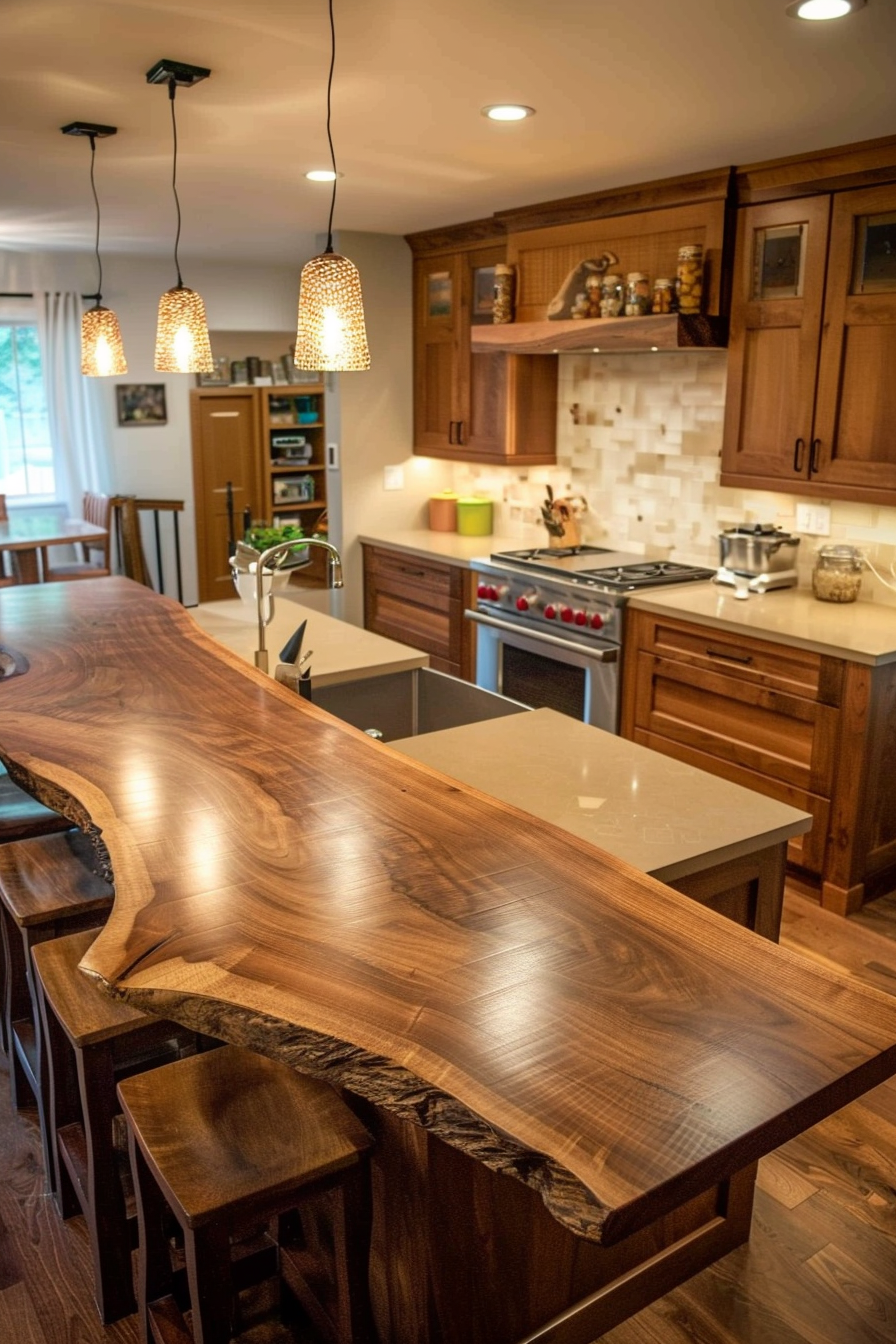
One way to increase seating and surface area in a kitchen is by incorporating a peninsula.
Taking this design a step further by using wood for the countertop creates a natural complement to wood cabinetry.
Extending cabinetry into a peninsula offers the chance to highlight a particularly beautiful grain and pattern in your wood selection.
Opt for a durable hardwood like oak, maple or walnut to stand up to daily use.
A butcher block style with side grain facing up provides resistance to scratches, stains and water damage.
Use a clear sealant like polyurethane to protect the wood while preserving the natural color and texture.
Adding a wood counter surface draws the eye along the full length of the peninsula while tying in the colours and tones of the cabinets.
It also warms up what could feel like a cold, narrow stretch.
A wood topped peninsula feels welcoming and organic, perfect for casual dining.
It’s an opportunity to really showcase the full range of your wood kitchen cabinetry.
Natural wood kitchen cabinets provide unparalleled richness, texture and craftsmanship.
Wood’s complex grains, swirling patterns and varied colors make every kitchen feel unique
While synthetic materials mimic natural wood, they lack the depth, variation and artistry of the real thing.
Hopefully the stunning kitchens featured here have sparked inspiration for integrating wood cabinetry into your own space.
Carefully choosing woods and finishes that align with your preferred style results in a cohesive, integrated design that enhances your kitchen’s atmosphere.
Natural materials endure because of their timeless beauty and character.
Wood cabinetry graced kitchens a hundred years ago and will elevate kitchens a hundred years from now.
Its handsome versatility allows for almost endless customization to your personal taste.
